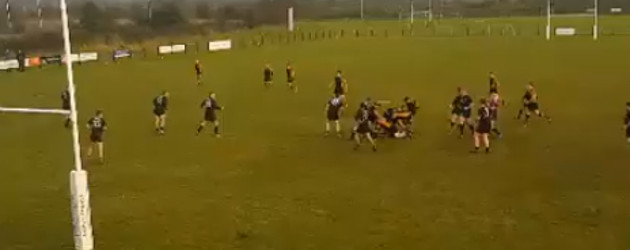Rugby Betting Techniques and Strategies
Rugby fans are a breed unto themselves. They are passionate about the game and can spend hours talking about events that happened in a particular game years gone by. Some rugby enthusiasts are content to stand on the sidelines and cheer but others want to participate in the game by placing a bet on a favored team or preferred player.
Some bettors put a wager down at an online casino sportsbook while others bet at a land-based casino, with friends and neighbors or at a real game. Regardless of where you lay your bet you’ll benefit from a bit of background information and betting tips that can boost your chances of walking away with a win.
Rugby

Rugby was invented in the early 19th century and is particularly popular in the UK and former English colonies and commonwealth countries. Almost from the beginning, spectators placed bets on the games as a way to join the fun while hoping to make a profit.
Since rugby is a comparatively high-scoring game, the betting differs from other sports. Wager options include straight-match bets, handicap markets, bets on the First Scoring Play, bets on tries and many other possible game events. Before you place your first bet it’s a good idea to become familiar with the rules and bet options.
If you want to find out more about all the different rugby betting markets that are offered then Oddschanger could be a good place to start. They offer tips and insights ahead of major rugby events and tournaments such as the upcoming Rugby World Cup next year.
Origins
Rugby history seems to begin in 1823 when William Webb Ellis, a schoolboy, created the game rules. The first match was actually a football game that was played at Ellis’s Rugby school. Running towards the goal with the ball in his hands, Ellis started to imagine game variations and from that, the game of rugby was born.
At the beginning, the game was limited to school fun but by the mid 19th century a set of rules was established and the Blackheath Club moved from the Football Association over to rugby. The founding of the Rugby Football Union (RFU) followed soon afterward but in 1895 the rugby league split into two factions because of payment disagreements.
The split caused teams based in the north to form their own code which they called the ‘Northern Union.’ The established league continued as the Rugby Football Union. Differences were small but significant — Northern Union teams were referred to as those who ‘play in the league code’ and they facilitated the ‘league championship.’ Teams that remained affiliated to the RFU were known as playing ‘rugby union’.
Rules
Some fans wager on regular games but most rugby enthusiasts bet on rugby union tournaments. These include the World Cup, the rugby Championships and the Six Nations. Basic rules of the two codes include:
Rugby League
- Each team has 13 active players plus 10 available substitutions.
- The winning team outscores the opposing team.
- There are two halves of 40 minutes per match — 80 minutes in total.
- Points are awarded for tries (4 points), penalty kicks (2 points), drop goals (1 point) and conversions (2 points).
- A scrum of 6 people is used to re-start play after forward passes or knock-ons.
- Each team can only have the ball for a period of 6 plays under the six-tackle rule.
Rugby Union
- There are 15 active players and 7 available substitutions on each team.
- The team with the most points at the end of the match wins.
- There are two halves of 40 minutes, 80 minutes in total, per match.
- Points are awarded for tries (5 points), drop goals (3 points), conversions (2 points) and penalty kicks (3 points).
- A scrum, usually consists of 8 players. Scrums are used to restart play following a forward passes or a knock-on. If the ball goes out of play, a line out is called so that play can resume. In all other restart events a free kick is taken.
The main objective is to score tries by advancing the ball down the length of the pitch in both codes. The player must be considered to be in control of the ball for a try to be given as a downward pressure is applied. The team who made the try after the try is given. A try is given a conversion – the player is ‘converted’ when he kicks a dead ball above the opponent’s crossbar and in between the goalposts.
A penalty is awarded if the opposing team commits an offence. The player will need to kick the dead ball between the opposition goal post to win points from the penalty, This is similar to a conversion but the penalty is taken from the spot where the offence happened. When a player kicks the ball over the crossbar of the opposition goalpost a drop goals is taken during play.The points are awarded only if the ball hits the ground before being kicked.
Betting Rules and Common Bets
Each bookie or sportsbook has its own individual rugby rules but in general bets are settled during the match.
Both codes include common rugby bets with the bigger the game, the more betting options are available. For example, for the Six Nations tournaments or the World Cup there are more available bets but popular bets are available for all matches.
- Penalty tries do not count in the First Try Scorer market.
- Handicap betting relates to the way that the odds are presented. Interpreting these odds is the key to placing an effective handicap bet. IN handicap betting, one selection is given a virtual deficit that allows it to overcome at the beginning of the match. The underdog may receive a virtual start. If the selections score is greater than that of its opponents following the handicap’s application, your selection is the winner.
- In Match Odds you place a simple bet on which team will achieve the highest number of points in the game. There’s a draw option so in the event of a draw on a 2-way market your bet becomes void. Handicap markets make bets more appealing.
- You can bet on which team will make the first score.
- You can bet on which team will achieve the highest score in the first half.
- You can bet on which team or player will achieve the first try.
- You can bet on your prediction of what the winning margin will be.
- You can bet on which player will score the most tries.
- You can bet on your prediction of the final spread.
- You can bet on the time of the first try.
- You can bet on overall team performance.
- You can bet on the overall winner.
Betting Strategy
As with any sport betting, it’s a good idea to research the players and the teams and analyze the odds.
- Remember that the ‘first try score’ option in rugby is not as clear-cut as is the ‘first goal score’ in soccer, simply because soccer has one or two strikers per team while in rugby, more players are eligible to achieve tries.
- Understand the teams – if one team has a forward oriented game or a good defensive kicking strategy the tries may be fewer than if the team’s strategy or power lies elsewhere. In such a situation you might do better by placing a ‘first scoring play’ bet.
- Many teams try to wear their opponents out in the first half in order to attack during the second half. If you believe that that’s the strategy that your team employs your best opportunities may be in the ‘halftime/full time’ and ‘totals’ bets.
- Don’t discount game day’s weather conditions. Rugby is dependent on the weather – when conditions are dry the game tends to be expansive and fast-paced. In such games the backs see a lot of the ball. Conversely, during muddy, wet conditions encounters tend to be forward-dominated. If you keep up with the players and their strengths and weaknesses you’ll be able to place smarter bets.










